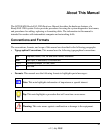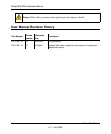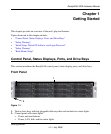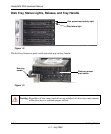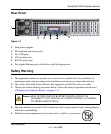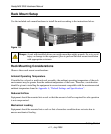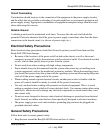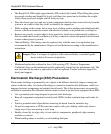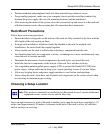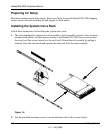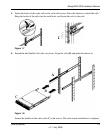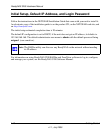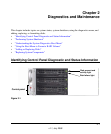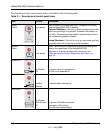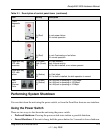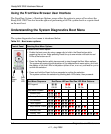
ReadyNAS 3200 Hardware Manual
Getting Started 1-7
v1.1, July 2009
• Put the mainboard and peripherals back into their antistatic bags when not in use.
• For grounding purposes, make sure your computer chassis provides excellent conductivity
between the power supply, the case, the mounting fasteners and the mainboard.
• After accessing the inside of the system, close the system back up and secure it to the rack unit
with the retention screws after ensuring that all connections have been made.
Rack Mount Precautions
Follow these rack mount precations.
• Ensure that the leveling jacks on the bottom of the rack are fully extended to the floor with the
full weight of the rack resting on them.
• In single rack installation, stabilizers should be attached to the rack. In multiple rack
installations, the racks should be coupled together.
• Always make sure the rack is stable before extending a component from the rack.
• You should extend only one component at a time - extending two or more simultaneously may
cause the rack to become unstable.
• Determine the placement of each component in the rack before you install the rails.
• Install the heaviest components on the bottom of the rack first, and then work up.
• Use a regulating uninterruptible power supply (UPS) to protect the ReadyNAS 3200 from
power surges, voltage spikes and to keep your system operating in case of a power failure.
• Allow any hot plug drives and power supply modules to cool before touching them.
• Always keep the rack's front door and all panels and components on the servers closed when
not servicing to maintain proper cooling.
Choosing a Setup Location
Leave enough clearance in front of the rack to enable you to open the front door completely (~25
inches) and approximately 30 inches of clearance in the back of the rack to allow for sufficient
airflow and ease in servicing.
Note: This product is intended for installation in a Restricted Access Location (dedicated
equipment rooms, service closets and the like) only.



